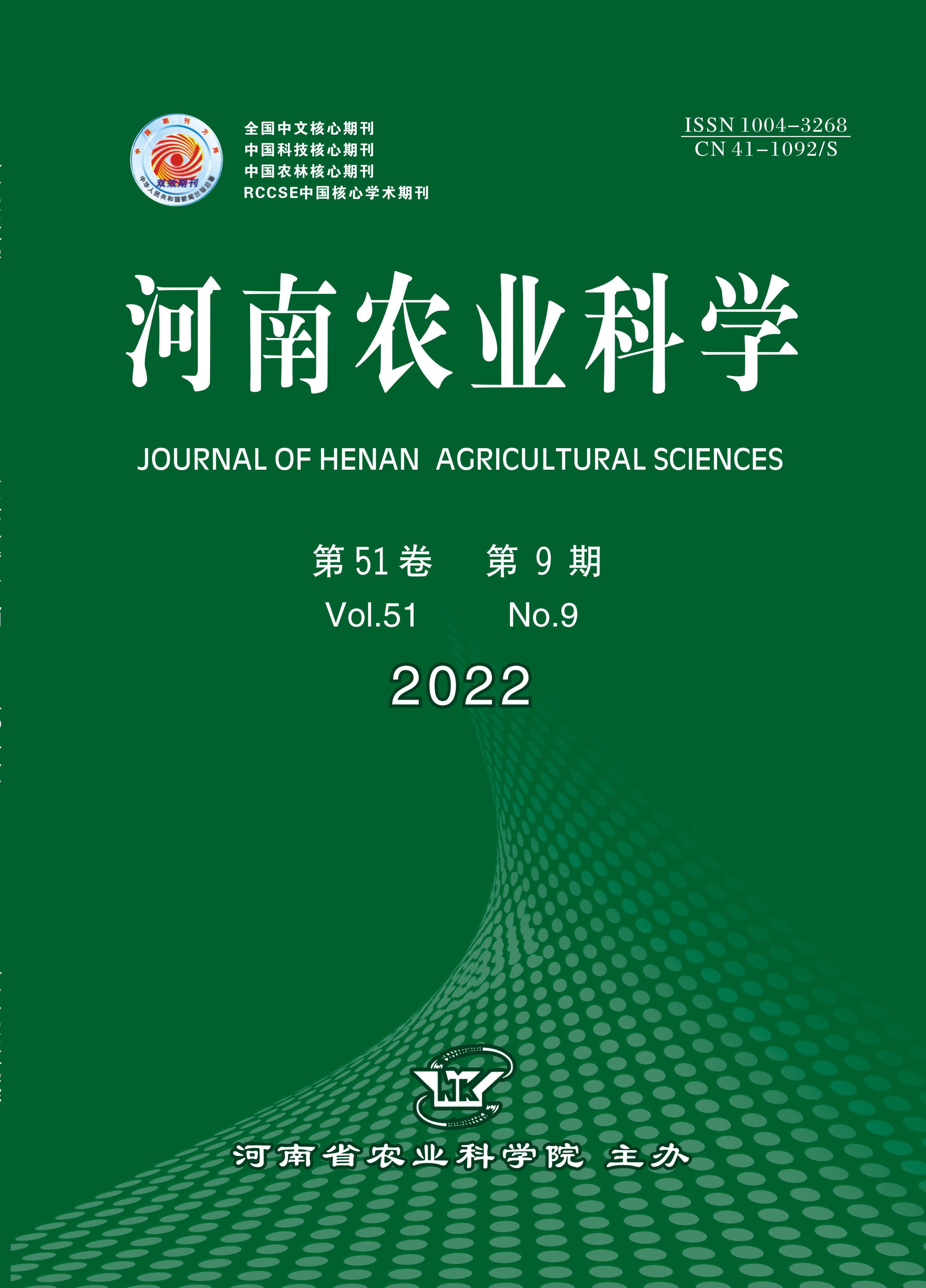-
Analysis of Differentially Expressed Genes in Two Different Nitrogen Efficiency Maize Varieties in Response to Nitrogen Reduction
- LI Chuan, ZHANG Panpan, ZHANG Meiwei, NIU Jun, ZHAO Xia, HE Guanhua, QIAO Jiangfang
-
2022, 51(9):
10-24.
DOI: 10.15933/j.cnki.1004-3268.2022.09.002
-
 Asbtract
(
)
Asbtract
(
)
 PDF (7133KB)
(
)
PDF (7133KB)
(
)
-
Related Articles |
Metrics
In order to explore the differentially expressed genes(DEGs)in Weike 518(WK518)with high nitrogen efficiency and Nongda108(ND108) with low nitrogen efficiency under nitrogen reduction condition and their functions,the ear⁃leaf samples were collected from WK518 and ND108 at mid filling stage under normal nitrogen fertilizer application rate(225 kg/ha nitrogen,HN)and low nitrogen fertilizer application rate(0 kg/hanitrogen,LN),and used for high⁃throughput RNA sequencing. Then the GO term and KEGG metabolic pathway of DEGs were analyzed from different compared groups,and the differentially expressed transcription factor families were analyzed. The results showed that 2 065 up⁃regulated DEGs and 2 319 down⁃regulated DEGs were detected between WK518 and ND108 under LN condition,2 368 up⁃regulated DEGs and 3 780 down⁃regulated DEGs were detected under HN condition;1 009 up⁃regulated DEGs and 2 268 down⁃regulated DEGs were detected in WK518 under different nitrogen application rates,and 364 up⁃regulated DEGs and 510 down⁃regulated DEGs were detected in ND108 under different nitrogen application rates.Under LN condition,DEGs between WK518 and ND108 were mainly enriched in uroporphyrin⁃Ⅲ C⁃methyltransferase activity,mannose⁃6⁃phosphate isomerase activity,oxidation⁃reduction process,mitochondrion organization,nuclear chromatin and other GO terms,and amino sugar and nucleotide sugar metabolism,phenylalaninemetabolism,monoterpenoid biosynthesis,glycine/serine and threonine metabolism,base excision repair and other KEGG pathways. Under HN condition,DEGs between WK518 and ND108 were mainly enriched in stomatal closure,transmembrane receptor protein serine/threonine kinase activity,chloroplast stroma,thylakoid,chloroplast envelope and other GO terms,and carbon fixation in photosynthetic organisms,amino sugar and nucleotide sugar metabolism,glycolysis/gluconeogenesis,β⁃alanine metabolism,photosynthesis⁃antenna proteins and other KEGG pathways.DEGs in WK518 were mainly enriched in response to chitin,protein phosphorylation,membrane,indole glucosinolate metabolic process,galactinol⁃sucrose galactosyltransferase and other GO terms,and carbon fixation in photosynthetic origination,plant hormone signal transduction,protein processing in endoplasmic reticulum,plant⁃pathogen interaction,MAPK signaling pathway⁃plant and other KEGG pathways under different nitrogen application rates.DEGs in ND108 were mainly enriched in response to water deprivation,toxin catabolic process,chitinase activity,trehalose biosynthetic process,trehalose⁃phosphatase activity and other GO terms,and glyoxylate and dicarboxylate metabolism,MAPK signaling pathway⁃plant,prodigiosin biosynthesis,zeatin biosynthesis,biotin metabolism and other KEGG pathways under different nitrogen application rates.Fifty⁃eight differentially expressed transcription factor families were detected in WK518 and ND108 under different nitrogen application rates,including GRAS,bHLH,MYB⁃related,NAC,C3H,ERF,C2H2,WRKY,FAR1 transcription factor families and so on,which were very important in plants growth,development and response to biotic and abiotic stresses.
